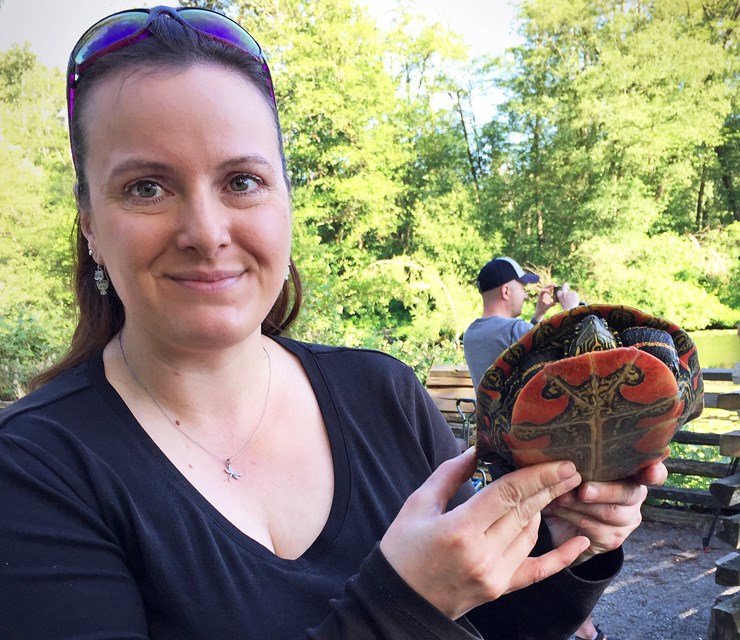If you come across a turtle with a number painted on its shell near Burnaby Lake, you might be tempted to conclude the reptile has wandered away from some kind of ultra-slow footrace.
In fact, the turtles have been marked by wildlife biologists in an effort to track a vital population of Western painted turtles that call the lake home.
More of the numbered turtles will be visible than usual at a nesting beach near the Cariboo Dam over the next couple months, as females come out of the water between mid-May and mid-July to lay eggs.
Peak activity is between 5 and 9 p.m., and volunteers will be on duty every evening, tracking the momma turtles’ behaviour.
Most of the turtles have already been marked over the years with individual codes that are both painted and notched onto their shells, but every now and again a new turtle will appear, according to wildlife biologist Aimee Mitchell, project manager for the Coastal Painted Turtle Project.
All the information gathered by Mitchell, fellow wildlife biologist Deanna MacTavish and volunteers is entered into a monitoring data base, which currently shows Burnaby Lake’s Western painted turtle population is thriving.
In a study concluded in 2016, the Coastal Painted Turtle Project determined the nesting beach by the lake produces about 200 baby turtles annually.
While the fenced area provides an ideal sport for females to lay their eggs, however, Mitchell said turtles are notoriously loyal to the places they’ve nested before – regardless of what humans have built there in the meantime.
As a result, turtles will sometimes be seen in the Avalon Avenue parking lot, just across the water from the beach.
Such was the case with Turtle 134 recently.
A volunteer spotted her in the parking lot.
“She could have been trying to nest there 30 years ago,” Mitchell said.
Mitchell and MacTavish have research permits allowing them to handle the turtles, something park officials don't want members of the public to do, according to Mitchell.
Civilians who spot a turtle that might be endangering itself while searching for that perfect nest should contact the Coastal Painted Turtle Project, she said.
In fact, any reports from the public about turtle sightings or observations are welcome, she said.
As the only breeding population of Western painted turtles in the Lower Mainland, Mitchell calls the Burnaby Lake population “very important” for the future of the species, which is at risk.
To get in touch with the Coastal Painted Turtle Project visit its Facebook page or email [email protected].



